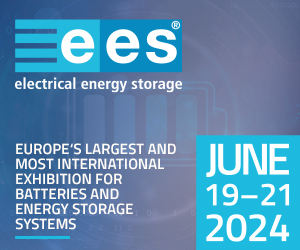New York state regulators yesterday approved energy storage goals of 1,500 MW by 2025 and 3,000 MW by 2030, plus a strategy to reach them, including a $310 million incentive program. The commission has been considering its energy strategy for several months and collecting recommendations from industry players that ranged from accelerating microgrids to supplementing wholesale market shortfalls. The final strategy, spelled out in a 199-page decision, relies on a combination of competitive markets, incentives, and market reforms to overcome barriers to energy storage. Much of it comes from an energy storage roadmap issued by the commission’s staff in June. The commission expects the $310…
Author: WoREA Editorial Staff Member
Solar power is emerging, as a highly demanded form in the renewable energy industry. Solar power is generated with the help of photovoltaics and concentrated solar panels. The emphasis on cutting down the carbon emissions has led the countries to increase the share of renewable energy in the electricity generation mix. Solar power sees maximum opportunities due to huge geographic potential and incentives and policies from the governments to promote clean energy generation. Solar power has attained milestones in the last decade, with global generation reaching to approximately 100 GW, by the end of 2017. Solar photovoltaics are advantageous as they…
Fully Integrated Storage Solution Will Provide Backup Power During Grid Outages As energy storage becomes increasingly important, SMA is continuing to invest in its offerings and is now delivering the Sunny Boy Storage-US inverter and Automatic Backup Unit. While other manufacturers offer a simple transfer switch and a number of separate components that must be purchased, SMA provides a complete solution with all parts integrated into one fully automated backup solution. “SMA’s Sunny Boy Storage with Automatic Backup Unit is a comprehensive solution that can supply whole home backup power in the event of a grid outage,” said Nick Morbach, Executive Vice…
A requirement for new homes built in California starting in 2020 to include solar electric systems is now formally part of the state’s building code. It follows approval Tuesday by the California Building Standards Commission of a plan endorsed in May by a state energy panel. California is the first state in the nation to mandate solar-energy installations on most single-family homes as well as multi-family residential buildings. A requirement for new homes built in California starting in 2020 to include solar rooftop panels is now formally part of the state’s building code. It follows approval Tuesday by the California Building Standards…
Thanks to digitalization, small decentralized power plants can be combined intelligently into larger units. Just like large-scale power plants, they can aggregate the electricity generated and feed it into the grid in a controlled manner. These virtual power plants are becoming an important building block of the renewable energy supply. While virtual power plants have to date played a minor role in the electricity market, it will soon be difficult to imagine our energy supply without them. A few years ago, the focus was on managing various technologies such as biomass, solar and wind power plants holistically; now, solar storage…




